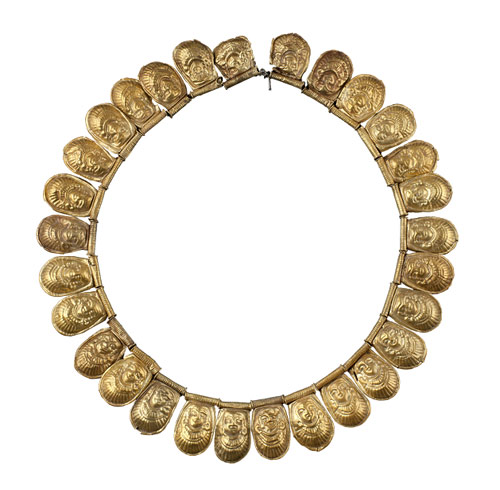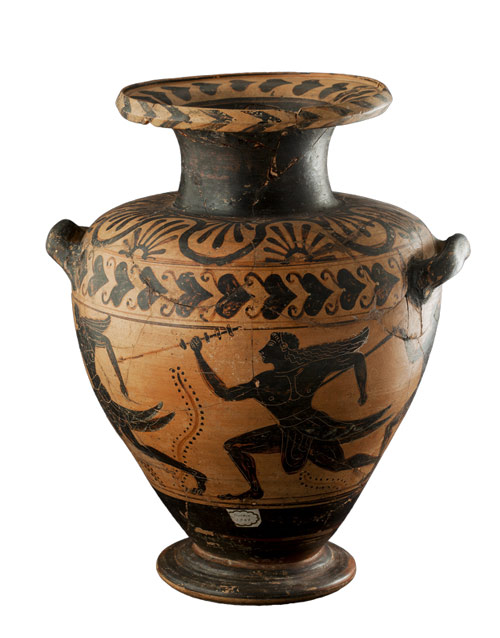Chinese will find similarities with their history in a collection of items from ancient Italy, organizers tell Xu Jingxi in Guangzhou.
An exhibition jointly organized by Chinese and Italian museums is touring the Middle Kingdom to introduce visitors to the Etruscans, the most ancient civilization of the Italian peninsula, which laid the foundation for Roman civilization.
The exhibition features 311 precious items on loan from 13 Italian museums.
"This is the largest exhibition of Italian archeological findings that I've helped bring to China," says Adriano Madaro, president of the Italy-China Museums Alliance, which unites 26 Italian museums and 32 Chinese museums.
 A gold necklace from the 7th century BC from Vetulonia, an ancient town of Etruria.[Photo/China Daily]
A gold necklace from the 7th century BC from Vetulonia, an ancient town of Etruria.[Photo/China Daily]
Madaro is on his 183rd trip to China since 1976 to promote the exhibition's show at the Guangdong Museum.
"I've worked as the curator for a series of exhibitions of Chinese cultural relics at the Casa dei Carraresi Museum in Italy since 2005. Now I bring shows of Italian cultural relics to China, comparing two great civilizations."
Madaro says people will find similarities between the Etruscan civilization and ancient Chinese civilization.
"Both of them respect the dead and value the idea of the afterlife," he says.

An Etruscan stamnos vase depicts young men running with spears in hand.[Photo/China Daily]
Around the 12th century BC, the Etruscans emerged in northern Italy. Their power peaked during the 6th century BC, when three of the seven kings of the Roman Kingdom were Etruscans. The Etruscan culture was eventually assimilated into the Roman culture in 1st century BC.
The touring exhibition in China, titled The Etruscans: Exhibition of the Dawn of Ancient Italy, displays the ancient civilization's religion, architecture, art and funerary customs, with urns, sarcophaguses and grave goods unearthed from tombs.
The urns and sarcophaguses are the main part of the exhibition. The ceramic urns from the civilization's early stages were shaped to resemble the houses of the deceased. In later years, the stone sarcophaguses or alabaster urns were lavishly decorated with sculptures depicting the afterlife.
We Recommend:
